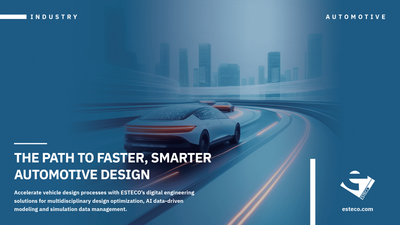Success story
Optimizing a perfect race engine. ESTECO Academy Design Competition winner
modeFRONTIER enabled Michael Bambula of the University of Florida to run the workflow, integrate third-party software, automate the design exploration process and perform post-process analysis.
The winner, Michael Bambula of the University of Florida, presented a top-notch design project, in which he achieved significant performance improvements (64.2 hp @16500 rpm) while developing a complete model for a Moto3 bike and realistic simulations that also considered the specifics of the race track. Organized in partnership with Aprilia Racing and Gamma Technologies, the competition was open to teams of undergraduate and graduate engineering students. The challenge was to improve the design of a 4 stroke single cylinder engine through multidisciplinary optimization (using modeFRONTIER) and 1-D simulation of the engine system with GT-SUITE. The competition award included an internship opportunity at the APRILIA Racing team, which counts several World Championship Awards. The goal of the project was to maximize engine power. Due to the constrained engine architecture, an optimization of the Intake/Exhaust system was performed. Gamma Technologies supplied a set of simulation tools (GT-Suite) to develop the 1-D model of the high-performance engine. Various aspects of the base engine architecture were constrained such as Bore, Stroke, Con Rod Length, Engine Speed, Max Valve Diameters, Max Valve Lift, Max Throttle Diameter, Max Compression Ratio, Non-variable Cam Timing, and Naturally Aspirated. Considering these constraints, the optimization of the cylinder filling (Wave Dynamics) was seen as the logical design direction. modeFRONTIER workflow was used to automate the design exploration process and integrate Excel and GT-Suite for computing lifts value intake and exhaust valve lift profiles and simulating the engine power output. During the development of the 1-D Engine Model there were inherently many unknowns, therefore Michael made assumptions supported by rigorous research. The design variables related to the intake/ exhaust system were automatically found by modeFRONTIER to optimize the output results: sum of engine power across engine speeds speeds from lowest to highest respectively (11500 rpm to 17500 rpm). “modeFRONTIER ran 1000 different designs that varied the input parameters.
The Hybrid Algorithm did an amazing job at finding the optimum solutions based on the objective of maximizing the engine power” said Michael Bambula, University of Florida Racing Team. “The analysis went beyond just determining the most powerful engine”, continued Bambula, “in fact the final objective, aimed at determining whether a certain design is sufficient for motorsports, was to compare it to lap times. This is why it was decided that the final group of optimum results from modeFRONTIER would be simulated in OptimumLap software considering, among other assumptions, a Moto3 motorcycle model traversing the Phillip Island Grand Prix Circuit in Australia”.





